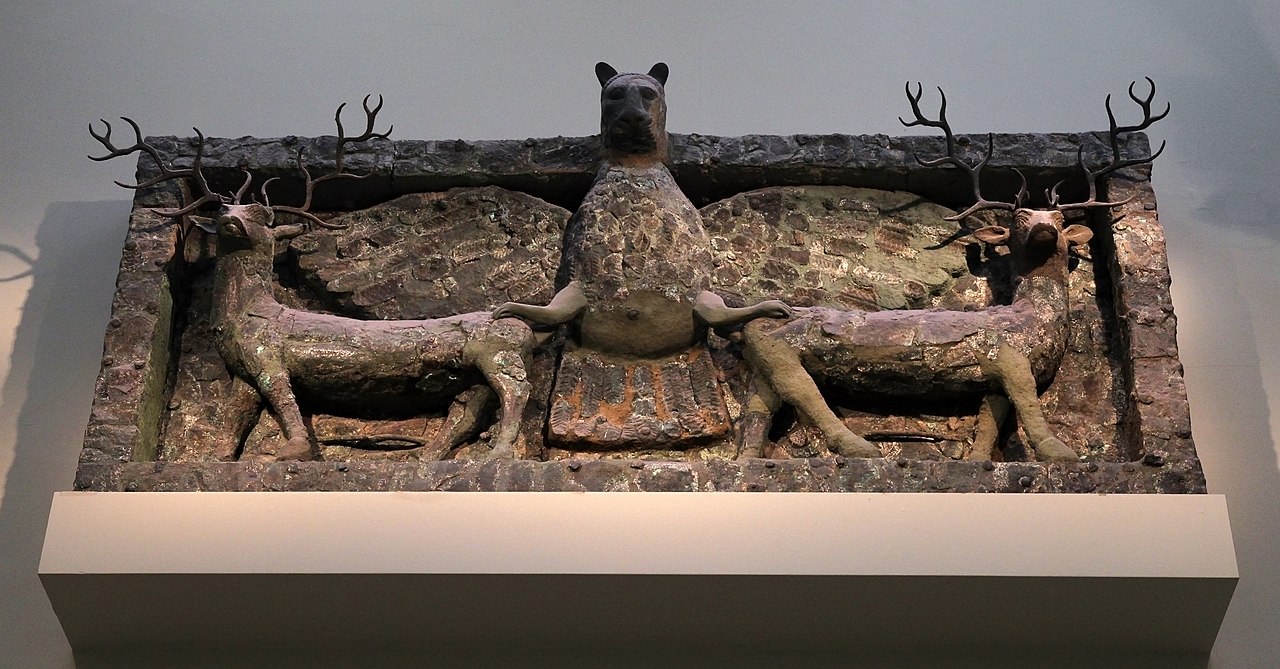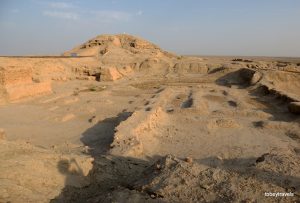6 Chapter 2.2: Sumerian Architecture and Art
SUMERIAN ARCHITECTURE
The introductory videos on Ancient Mesopotamia and the Sumerians conveyed the religious character of the Sumerians. The Sumerian devotion to their gods was manifest in the great religious complexes that stood at the heart of the city. Like the ancient Egyptians the Sumerians were capable of building on a monumental scale and great architectural feats. The videos below explore one of the hallmark building types of the ancient Sumerians.

Artstor gallery for UNO Students
Follow this link for a gallery of Sumerian art on Arstor. This resource is only available to UNO students. If you are off-campus, you will be prompted to log in. For a refresher on using Artstor, see the UNO Librarires Artstor libguide.
Sumerian Architecture TASK 1
The short reading and video below explore the most significant type of structure created by the ancient Sumerians and used throughout Mesopotamia. After reading/viewing the sources, please answer the accompanying questions.
Anu Ziggurat of Uruk – (you will have the information needed to complete this assignment in the first 6 minutes)
White Temple and Ziggurat, Uruk (article)
Please follow this link to access and read the article, before proceeding to the prompts below.


Sumerian Architecture TASK 1 prompts:
To whom was the Ziggurat dedicated?
What was the form, function, and materials of the Ziggurat?
What is the relationship of the Ziggurat to the theocratic political system of the time?
What are the significant features of the White Temple?
SUMERIAN ART AND RELIGION
Many of the Sumerian objects that survive had a religious purpose or depicted imagery that reflected their beliefs.
Below are sources on different Sumerian objects that were used in their religious worship or depicted some aspect of their religious beliefs. After reading/viewing the information on each object, please answer the accompanying questions.
Standing Male Worshiper from Tell Asmar TASK
Standing Male Worshiper from Tell Asmar TASK 1 prompt:
Where and with what was this found?
What was the original purpose of this object?
What are the prominent stylistic characteristics of this object?
How does its manner of representation relate to its function?
Sumerian Vases TASK 1:
Watch the following video and read the linked article, then respond to the prompts below.
Ancient Near East – The Uruk Vase
https://www.youtube.com/watch?v=gBn12dYKsnA
Warka Vase – Khan Academy (article to read)
Please follow this link to an article about the Warka Vase, then respond to the prompts.

Sumerian Vases TASK 1 prompts:
Which aspects demonstrate that it was a significant object?
What is taking place in the image (the upper register is most significant)?
SUMERIAN ART AND BURIAL
An astounding discovery of early dynastic Sumerian tombs from Ur shed light on the luxury enjoyed by these wealthy families.


Sumerian Art and Burial TASKS:
The sources below describe the way the owners of the so-called Royal Tombs at Ur were buried and the role that artworks played in the burial. After viewing the videos, please answer the accompanying prompts.
Treasures from the Royal Tombs of Ur
Sumerian Art and Burial TASKS prompt: The Royal Tombs of UR
Archaeologist:
Site of tombs:
Significance of royal tombs:
Treasures from tomb of Queen Puabi:
Occupants of tombs (beside ruler) and how deaths occurred:
Objects found in the tombs (select 2):
Royal Cemetery of Ur
Sumerian Art and Burial TASKS prompt: Royal Cemetery of UR
What is the inequality to which the lecturer draws attention? How is it expressed in the tombs and the objects within them?
Expedition – Powerful Women of Ur
Sumerian Art and Burial TASKS prompt: Powerful Women of UR
What evidence is there for the religious and political leadership of women?
Bonus content:
Ever wonder what music sounded like 4,500 years ago? Here is a video of an accurate reconstruction of one of the Lyres of UR being played:

